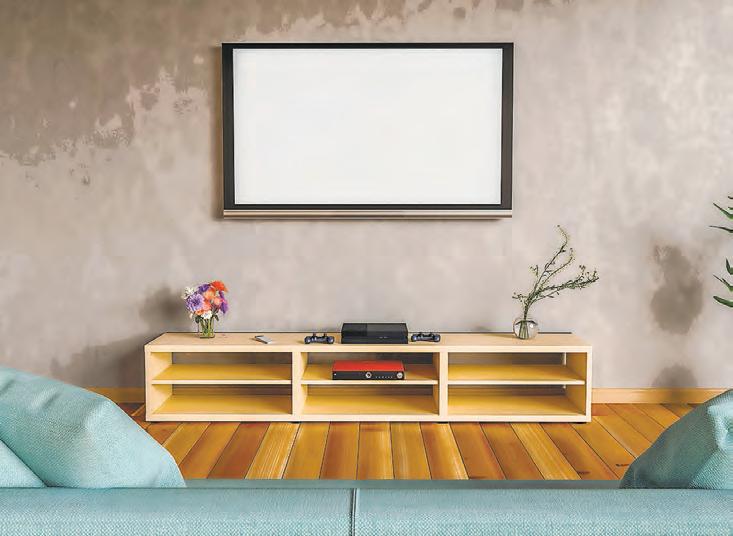
2 minute read
Variables to consider when choosing a media room
METRO SERVICES
The term “home theater” once made homeowners who love movies and sports dream of the day when they could dedicate a large area in their home to watching the big game or their favorite films.
Such rooms are now widely referred to as “media rooms.” Though the terminology may have changed, media rooms are not all that different from home theaters.
Before choosing an area of their home as their designated media room, homeowners must consider a host of variables to ensure they get as much out of the room as possible.
Location and shape: Of course the location of the room is of the utmost importance. Media rooms tend to be more social settings than traditional home theaters, which were often designed to be isolated from the rest of the home so noise and natural light did not adversely affect the filmwatching experience. Homeowners may not want their media rooms to be in high traffic areas of their homes, but they needn’t be completely secluded, either.
The renovation experts at the DIY Network note that the shape of a room should be considered before designating it as the media room. In general, square rooms are not ideal, as such rooms can produce harmonic distortions. A rectangular room likely won’t produce such distortions, especially when homeowners place their screens and primary speakers on short walls. It’s important that homeowners do not downplay the importance of sound, as media rooms, unlike traditional home theaters, may be used for listening to music just as much as they are for watching films or sports. Viewers may not recognize distortions when watching something, but homeowners may notice these abnormalities when listening to music.
Windows: Media rooms are multipurpose rooms, so homeowners don’t need to remove rooms with windows from consideration. But the experts at the DIY Network note that windows are hard surfaces that can reflect sound and distort audio, and the light that gets in through windows can produce reflections on the viewing surface.
Each of those factors can adversely affect your listening and viewing experience. A room with windows can still make for a good media room, but you may want to invest in some blackout curtains to mitigate some of the disadvantages of having windows in the room.
Wall colors: The colors of the walls in the room is another variable homeowners will have to consider. Homeowners won’t want to host guests for the big game in rooms with darkened walls, as that can create a dreary atmosphere and potentially make people tired. But especially bright colors will reflect light and adversely affect the viewing experience. Neutral colors should not affect the colors on the screen, making them the ideal color choice for media room walls.
Media rooms are high on many homeowners’ renovation lists. Considering a host of variables prior to designating an area for a media room can ensure the finished product is as enjoyable as possible.








